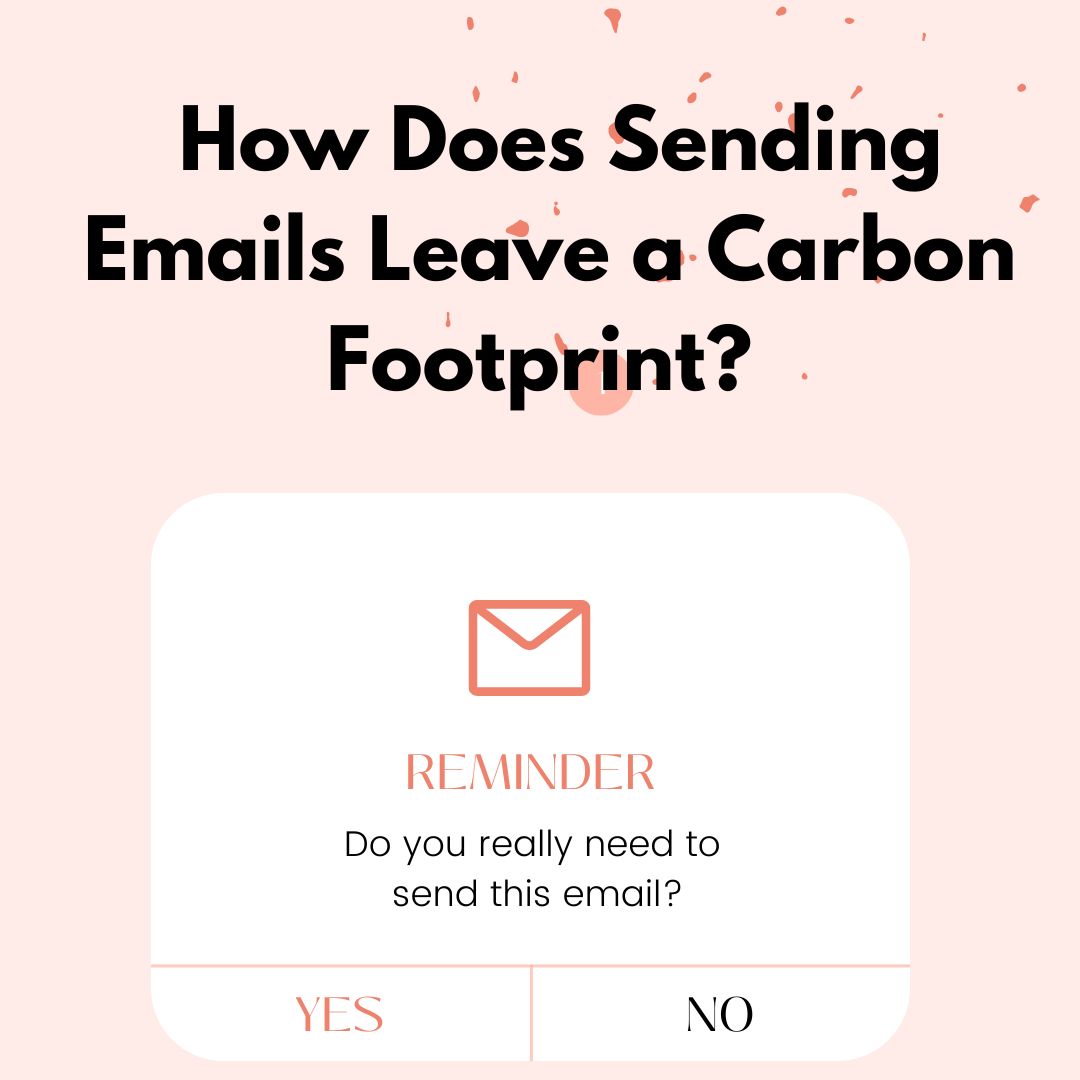
Have you ever stopped to consider how much of an environmental impact sending emails has?
It is hard to conceptualize or think about "How does sending emails leave a carbon footprint?", but let's take a look at this puzzling question.
From the server farms to the energy used in production and delivery, emails do indeed have a carbon footprint. We will be exploring the specifics about this carbon cost, including how much it is and what can be done to try and reduce it.
How Much Carbon Does an Email Produce?
Again, this is also very hard to think about. Where do you even begin to try and calculate this figure? It became rather apparent on Richard Osmond's House of Games that the contestants there were dumbfounded by a similar questions: "How many tonnes of carbon would be saved each year if every adult in the UK sent one less e-mail per day?"

The answer varied considerably. In the end it was 16,433 tonnes (tons if you prefer the US spelling) that the UK could save if everyone sent one less "Thank You" email per day. Staggering!
Can you envision a movement of No Email Day similar to what we do for Earth Day and Plastic-Free July movements.
It is estimated that sending an email leaves a carbon footprint of around 50 grams of CO2 for each message sent. This may seem small, but the amount does add up quickly when you consider how many emails are sent.
Does Every Email Have a Carbon Footprint?
Yes, every email sent will have an associated carbon footprint. The amount of CO2 emitted depends on the size of the message and how many resources are needed to send it, but it will still have some impact.
How Much Carbon Can be Saved by Not Sending Unnecessary Emails?
As mentioned before, sending an email can create a carbon footprint of about 50 grams of CO2 for each message sent, so avoiding unnecessary emails can make quite a difference. Even something as simple as forwarding fewer jokes or funny videos can help reduce your carbon footprint from emails.
While some studies have suggested that the carbon footprint for sending emails is as low as 0.03g of CO2, this does not account for all of the resources used to send, store, and retrieve emails.
The short answer here is no. Some experts argue that deleting emails can reduce the carbon footprint. However, the amount of energy used for the delete operation is insignificant compared to the energy used in creating, sending, and receiving emails. In order to make any significant difference, it is best to focus on reducing the number of emails you send in the first place.
It sort of like trying to recycle our way out of the plastic pollution wave that we are swimming in. We know that recycling isn't working so we need to buy more plastic-free products.
Why should you delete old emails?
Deleting old emails is beneficial for a few reasons. First, it can help reduce the amount of digital clutter in your inbox which can make it easier to search and find important emails.
Additionally, it can help reduce the energy used in storing and accessing emails, as well as lowering the amount of carbon emissions associated with those emails.

Which Has Less of a Carbon Footprint, a Letter or an Email?
Technology, like emails and letters, uses energy to help us communicate with each other. A letter uses more energy to send than an email, so it has a bigger carbon footprint.
So, yes it is true that email is more sustainable than paper mail when it comes to energy and emissions. Sending emails instead of paper letters saves a lot of energy. It only takes 1.7% of the energy to send an email compared to delivering a letter!
Emails also have some energy use as they are sent, stored, and received, so they have a smaller carbon footprint. By being mindful of how we use emails, we can help reduce the amount of energy we use and the amount of carbon emitted.
Which has a bigger carbon footprint emails or a phone call?
Generally speaking, emails produce a much smaller carbon footprint than a phone call does. While the exact amount of energy used will depend on a variety of factors, emails typically use about 50g of CO2 per message, while a phone call can use up to 1000g of CO2.
What are 3 Tips to Reduce Your Carbon Footprint When Emailing?
- Be mindful of how much you're sending and receiving - only send emails when necessary and avoid forwarding large files or messages with lots of images.
- Utilize tools like Cleanfox or Boxbe to sort through your inbox and unsubscribe from emails you don't need.
- Consider using alternative messaging apps or programs that have lower energy requirements. WhatsApp, Signal, and Telegram are all messaging apps that have a lower carbon footprint than email. These apps use less data and servers to send messages, reducing the amount of energy needed to power them. Additionally, they rely on end-to-end encryption to protect user data, making them more secure than traditional email services.










